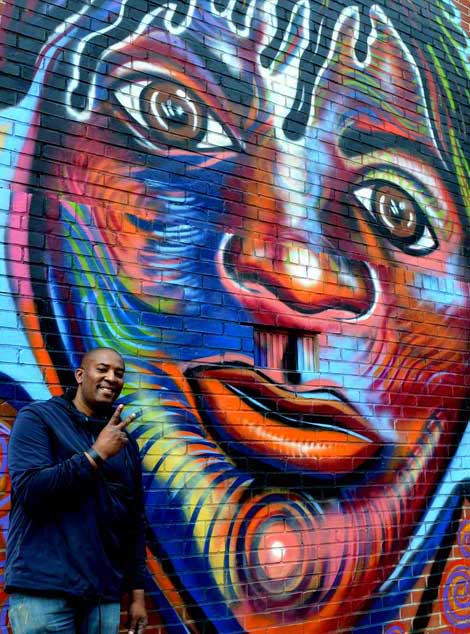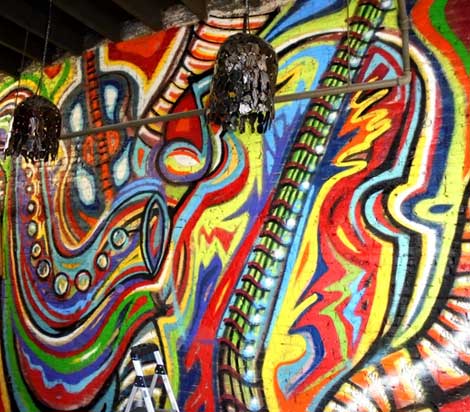6 Ways to Tell the Difference Between Street Art and Graffiti | Corey Barksdale Graphics
**Corey Barksdale**, a leading **Atlanta-based African American muralist and fine artist**, brings vibrant, socially engaged visuals to both city streets and gallery walls. As the urban art scene grows, the line between **street art** and **graffiti** continues to blur. Understanding the difference is essential for art lovers, collectors, and city officials alike. Here's how to distinguish the two, especially as they play out in places like the **Atlanta art gallery** scene.
### 1. Street Art Is Sanctioned; Graffiti Is Not
The most notable difference between street art and graffiti is
legality. **Street art is usually commissioned, permitted, or
created through public art programs**—while graffiti is typically
unsanctioned and created without permission. In cities like Atlanta,
programs such as Elevate Atlanta promote legal murals that beautify
and uplift communities. Corey Barksdale’s murals, for example, are
legally commissioned and often tied to cultural events and
neighborhood revitalization.
### 2. Street Artists Work in Daylight; Graffiti Artists Work at
Night
If you spot artists painting a wall in the middle of the day, it's
likely a legal mural or piece of public art. **Street artists often
work during the day with permission**, sometimes supported by lifts
and scaffolding from city partners. In contrast, graffiti artists
typically paint under the cover of darkness, trying to avoid
detection. Corey Barksdale’s daytime mural work in places like
**Decatur and Downtown Atlanta** is a hallmark of legitimate street
art.
### 3. Street Artists Use Multiple Mediums; Graffiti Uses Aerosol
While both graffiti artists and street artists may use spray paint,
**street artists also incorporate a wide range of materials**:
acrylic, stencils, wheatpaste, metal, LED, projection mapping, and
more. Corey Barksdale’s art, for instance, includes mixed media
techniques rooted in **African American art traditions** and modern
fine art practices.
Graffiti, on the other hand, is primarily executed with aerosol
cans. The freehand mastery of spray paint defines graffiti as a
visual style—fast, bold, and often coded with subcultural meaning.
### 4. Graffiti Is Harder to Read
Graffiti focuses on stylized text and signatures called “tags,”
which often appear abstract or indecipherable to the untrained eye.
Styles like **wildstyle** are intricate and layered with symbols,
letters, and custom calligraphy. Graffiti may also include bubble
letters, blockbusters, and tags.
In contrast, **street art is designed for readability and mass
appeal**. Artists like Corey Barksdale use expressive figures, bold
color schemes, and storytelling imagery—making their message
accessible to the general public.
### 5. Street Art Is Abstract or Figurative Public Art
**Street art often bridges abstraction and figurative
representation**, merging fine art principles with urban
environments. It is meant to spark dialogue, beautify public spaces,
and resonate with diverse viewers. Corey's work often blends
**jazz-inspired abstraction** with **African American historical
themes**, demonstrating the flexibility of street art as an artistic
platform.
Graffiti, meanwhile, focuses more on identity, territory, and style
than public dialogue. It’s often misunderstood due to its secretive,
coded nature.
### 6. Street Artists Sign with Real Names or Handles; Graffiti
Artists Use Aliases
A key indicator of street art versus graffiti is how the work is
signed. **Street artists typically use their full name or Instagram
handle**, establishing their identity within the creative economy.
Corey Barksdale signs his public murals clearly, offering a
professional point of contact for commissions and gallery inquiries.
Graffiti artists often use pseudonyms—“superhero” style monikers
that preserve anonymity and protect against legal consequences.
These aliases are rarely connected to professional representation or
public outreach.
---
### Why It Matters for Atlanta’s Urban Art Scene
Understanding these differences is crucial as cities invest in art
to strengthen communities. Artists like Corey Barksdale help
redefine what urban art means—**bridging fine art, street culture,
and African American identity** in meaningful and accessible ways.
Want to see the difference in real life? Visit the **Corey Barksdale
Street Art Gallery**, where murals meet gallery canvases and urban
visuals meet fine art collectors.
📍 Explore: CoreyBarksdale.com
📩 Commission a mural or live painting: clow2ground@gmail.com
---
**Takeaway**: Both street art and graffiti have deep roots and
powerful voices. But **artists like Corey Barksdale** show how
street art can transform public space into a canvas for culture,
history, and beauty. Next time you're admiring an Atlanta mural,
look for the signature—and remember the story it's trying to tell.

